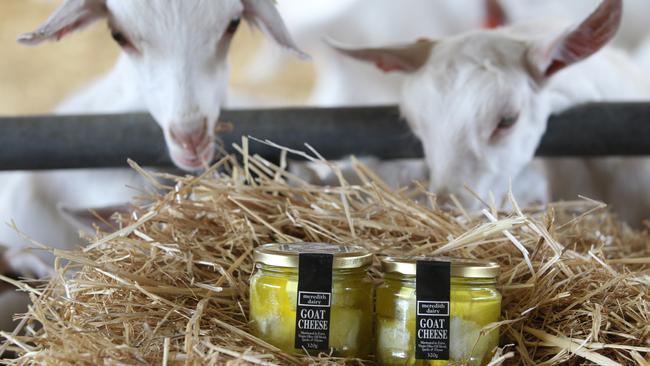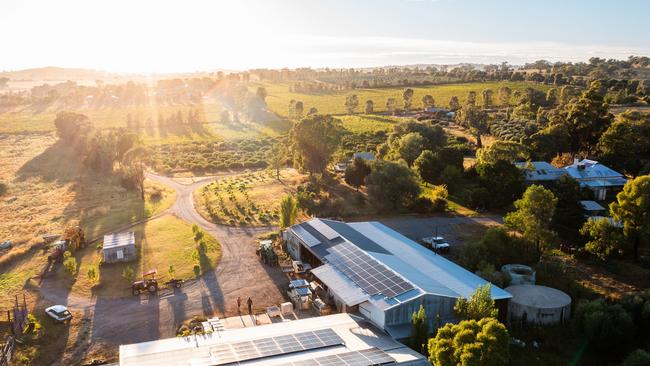How farmers can cut costs by using renewables
With energy prices at record highs more producers are turning to renewable energy.
With energy prices at record highs and ageing grid systems causing power supply to be unreliable in some regional areas, more producers are turning to renewable energy.
Farm Renewables Consulting director Karin Stark said recent high energy prices meant more farmers were seriously considering renewable options.
“Farmers are looking to build that resilience on farm, and make sure that they’re less exposed to events where the cost of fuel and electricity spike, and then they’re at the mercy of that those input costs,” she said.
Ms Stark, who is organising a Renewables in Agriculture conference in Albury next month, said there was an increasing “opportunity cost” of not switching over to renewables, and farmers were looking to learn from each other about what set ups worked best.
Meredith Dairy in Victoria and Rosnay Organic in Central West NSW are among producers who have invested in renewables and say they have sharply reduced their energy costs.

Meredith Dairy
For Victorian dairy powerhouse Meredith Dairy, running its operations on renewable energy makes simple business sense.
Based on a 2250Ha property west of Melbourne, the business runs goats and sheep and processes 28,000L of milk per day into a range of dairy products.
Pasteurising milk, incubating yoghurt and washing down equipment requires a lot of heat, bioenergy was the best technology to meet that need, and to meet that need, mechanical engineer Dominic Murphy said.
“Technologies like solar panels don’t go a long way towards meeting the demands of industrial heat, because the volume is so much larger and the temperature is a lot higher. Industrial heat is a big market for bioenergy,” Mr Murphy said.
Seven years ago, the company invested in a wood-fired boiler at a cost of about $130,000.
With the business growing at a rate of about 15 per cent year on year, the company is now in the process of installing a second wood-fired boiler at a cost of about $600,000.
The new installation is expected to pay for itself in four to five years, Mr Murphy said.
Combined, the two boilers will reduce the company’s energy bills by about 70 per cent.
“All of these savings increase with the current and frequent price increases for energy,” he said.
For smaller producers, a limitation of the technology is the maintenance required, Mr Murphy said.
“There is a growing knowledge base, but currently, there’s not much of an industry to support these things (in Australia), in terms of maintenance locally. So you would probably rely on an operator who’s able to repair and troubleshoot,” he said.
Victorian Bioenergy Network president Andrew Lang said there was a “realistic potential” for biomass to power up to 30 per cent of Victoria’s energy needs in the near future. The sector currently accounted for 10 to 15 per cent of demand, he said.

Rosnay Organic
Wine, fig and olive producer Rosnay Organic has turned to renewable energy to increase production at its winery in Canowindra in Central West NSW.
Production at the 34ha farm, which consists of 20ha of grapes, 10ha of olives and 120 fig trees has been growing steadily since Sam Statham took it over from his parents in the 1990s.
But finding himself “at the end of the grid network”, Mr Statham found there were occasional power outages and interrupted his operations.
Last year he was able to secure a grant from the NSW Department of Primary Industries to fund 50 per cent of a 40KW solar installation, which has not only cut his energy bills, but also allowed him ramp up production.
“We have saved about 75 per cent on bills and been able to increase production by about 30 per cent,” he said. Over the next few years, he hopes to increase production another 25 to 50 per cent.
The other advantage of the set up is that it works on what is known as a peer to peer trading platform. This has enabled the business to generate excess energy from the solar panels on its winery, and trade that power with its bore, which is run at a separate location.
“Using peer to peer trading, if you’ve got a beautiful day and you’ve got plenty of power and you’re exporting to the grid, whatever power I use on the bore would be reduced by the amount of power that is coming out of our solar panels up at the winery,” he said.
Mr Statham expects to the solar installation to have paid for itself in 10 years time, though that time period would have been 20 years had he not received the 50 per cent grant.
For his business, the main advantage has been increasing the power capacity at the farm.
“Putting in batteries and solar can help overcome the limitations of our ageing infrastructure and supply the power you need if you’re growing production like we are,” he said.





